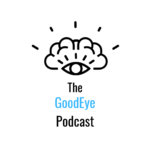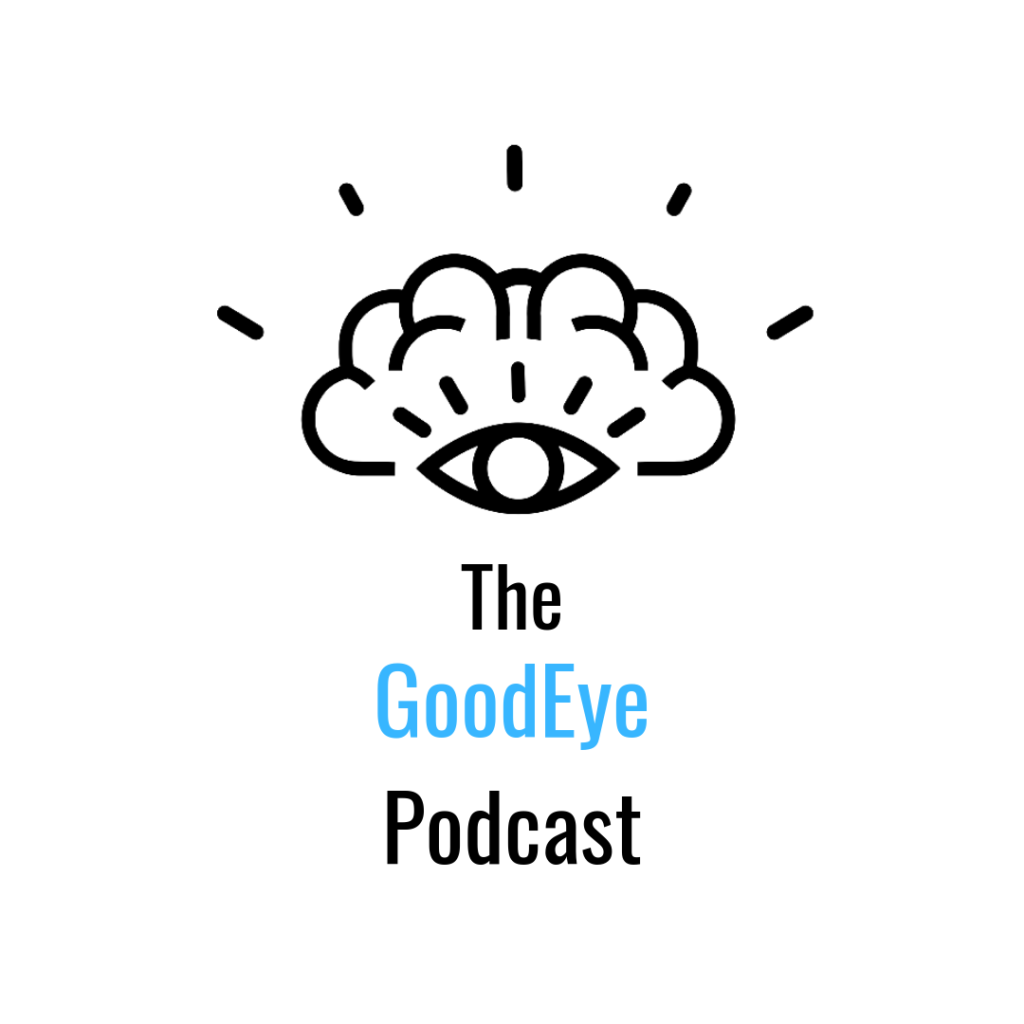Crack Fox – Little Wierdo
Asylum 123 – October Beach House
Illiterate Light – All The Stars Are Burning Out
Midlife Pilot – Start The Day
Superchunk – Fire In The Western World
Voarm – Emptiness
Whiteflower – Cross
Balter Choir – Leaves Falling
Butcher Brown – Down With The King
Crucial Rip – Force Fed Concrete
Dorthia Cottrell – Price To Prey
Earthling – Humanity Dissolved
Erik Larson – Electric Burning
I Am The Liquor – The Devils Due
Landon Elliott – Aftermath
NO BS! Brass – Begin Again
Prisoner – Flash Dirge
Stone Woman – Near Dark
Tomb of Annihilation – Black Coffin Ride
Appalling – On The Backs of Horses
Bearstorm – Biophobia
Book Of Wyrms – Leatherwing Bat
Cough – Ritual Abuse
Roy Batty – A Quality of Mercy
Page 2 of 48
Both podcasts – same exact interview.
In this dual episode of Studio B RVA and the Good Eye Podcast, the conversation is with Melissa Vaughan, President of WRIR, Richmond’s independent community radio station. She took over in 2020. She had previously acted as Volunteer Coordinator. Since taking over as WRIR’s fearless leader, she has spearheaded growth, expanded programming, volunteer and fundraising for the station and even led efforts to buy a new building so the station could grow further and increase its service to the community.
Laura Faison is the Chief Communications Officer for Goodwill of Central and Coastal Virginia. We discuss creating Halloween costumes from repurposed materials available at Goodwill, sustainability practices, Goodwill’s mission, donation policies and more.
NEW
Drook – The Pure Joy of Jumping
Earthling – Humanity Dissolved – Humanity Dissolved
Fight Cloud – Ripper
FM Skyline – Circles
gusher – kiissiiiing song
Tomb of Annihilation – Black Coffin Ride (Single)
Transylvania Stud – Empress – Thread feat. John Lancaster
VERY RECENT
bodyshell – Astronaut
DOWNHAUL – Sinker
Energy 2000 – The Rocket into Planetary Space
ENFORCED – A Leap Into the Dark – EP (24-bit HD audio) – A Leap into the Dark
indoor-indoor – Miracle Time
Justin Golden – Keep Your Hand on the Plow
Midlife Pilot – Stay Low
Ninth Realm – Infernal Spite MMXXIV – Infernal Spite
Shagwüf – To Hook A Fish Of Memory
The Get Off – Destruction Aesthetic EP – Takes One To Know One
SPIRIT OF THE BEEHIVE – STRANGER ALIVE
The Mitras – No One Gets Back To Me
Tomb of Annihilation – The Dead and the Living (Tomb of Annihilation)
OLDER
Byzantine – Black Sea Codex – 02 Wings of My Soul
Colin Phils – Totokon – Totokon (full version)
Flashlight Tag – skeleton
Left Cross – Promo 2022 – Burning Raids
Merciful Zero – No Filter Through The Vortex – Elephant Song
Piranha Rama – Golden Blues
Pyramid Mass – Wars
Shane Cooley – Dracula
Spooky Cool – Net Ignored
A couple spots to note. The images below show a few spots along the route to be aware of due to faster and heavier traffic. They are short, but being ready for them will go a long way toward keeping everyone safe.




Commercial
Manifesto Video
The agency wanted two different reads for essentially the same campaign with the same message. The commercial read had a bit of a wink, was straightforward and warranted delivery of the message quickly and efficiently. It was to have a gruff, honest, hardworking vibe. The manifesto video needed a similar approach, but it was more measured. You’re leaning in a little more, relating, sharing. The blue-collar element is there but it’s pulled back a bit, almost documentary-style for folks who know a hard day’s work.
These two projects are what I love about VO. They’re very similar, but they also have very distinct differences that need to be communicated in a subtle manner. Direction and communication of the writer’s vision is key and the agency did a great job helping me to storyboard it in my mind so that I didn’t screw it up. Aside from post-production (the unsung heroes of the creative process), voiceover is one of the last steps – from concept to finished product. Often, the VO won’t even know if they’ve nailed it until they see the final. You can pretty much know based on how the session went and how you felt about your performance, but you never know for sure until you see how all the elements come together.
2024 RELEASES
NEW THIS MONTH:
ENFORCED – A Leap into the Dark
Shagwüf – To Hook A Fish Of Memory
DOWNHAUL – Sinker
indoor-indoor – Miracle Time
bodyshell – Astronaut
Energy 2000 – The Rocket into Planetary Space
Justin Golden – Left My Gal in the Mountains
Midlife Pilot – Stay Low
The Mitras – No One Gets Back To Me
SPIRIT OF THE BEEHIVE – STRANGER ALIVE
Tomb of Annihilation – The Dead and the Living (Tomb of Annihilation)
Ninth Realm – Infernal Spite
OTHERS RELEASED IN 2024
BEEX – Big House
Halfcast – Able To Tell
The Judy Chops – Good Days
Young Scum – Lighter Blue
doll baby – Crumbled at our feet.
I am the liquor – The Devils Due
Asylum 213 – Subi
Butcher Brown – Secret House
Drook – America, My Window
Greg Garner – Lighthouse
Destruct – Omnicide
Crucial Rip – Force Fed Concrete
Mutually Assured Destruction – Hexer
Tennishu – Heat To Drop
FM Skyline – In the Clouds
Sam Valentine – Somewhere Golden
the Ar-Kaics – Chains
Bats & Mice – worst time
New Lions – Canada
Outer World – The Drum the Beat
WKNDR – All In
NO BS! Brass – Begin Again
This episode was recorded live at Final Gravity Brewing during the kick-off event on August 14th. We’ll do this again on September 11, and everyone is invited whether you’re riding in the event, coming to Forward Fest or not. This is a community organization and these are community events. The Go Forward Together Ride and Forward Fest event following the ride is Saturday, October 5th.
In this episode we talk with Forward Foundation Executive Director Andrea Starr, Ride Committee member and rider/participant Steve Dragone, and rider/participant Jeff Smack about this year’s upcoming event, past events and growth (this is year 5), the mission of the Forward Foundation, volunteers, supporters and sponsors, details about registration, the cycling community including our official support shop Blue Ridge Cyclery, the 50 and 30 miles routes and more.
Register and find more info about the ride and the after-event here.
www.goforwardtogetherride.com
Learn more about the Forward Foundation and their mission of assisting single parents in financial crisis here:
www.forwardfoundationva.org
Wikipedia calls Thrash Metal: “an extreme subgenre of heavy metal music characterized by its overall aggression and fast tempo. The songs usually use fast percussive beats and low-register guitar riffs, overlaid with shredding-style lead guitar work.”
More simply put, it’s a result of influences from punk rock, hard rock and heavy metal – specifically the New Wave Of British Heavy Metal or NWOBHM.
Ground Zero for the thrash movement was San Fransisco, with major players such as Metallica, Slayer, Exodus, Testament, Metal Church, Death Angel and Possessed hailing from there. Los Angeles and New York City played a large part as well with Megadeth beginning in L.A. following Dave Mustaine’s ouster from Metallica. Anthrax and Nuclear Assault were both from NYC.
The term “thrash metal” was first used in the music press by Kerrang! magazine’s journalist Malcolm Dome while referring to another of the “Big Four” (Metallica, Megadeth, Anthrax and Slayer), Anthrax, and their song “Metal Thrashing Mad”. Before this, Metallica frontman James Hetfield referred to his band’s sound as speed metal or power metal.
In the August 17, 2024 episode of “Cause and Effect” on WRIR, I walk through some of the early influences of thrash including fast and powerful songs from rock and metal bands such as Queen, Black Sabbath, Accept and Motorhead and punk bands such as GBH, Black Flag and The Misfits. Then we make our way into the first wave and peak of thrash (Big Four, Metal Church, Overkill, Nuclear Assault), the second wave (Testament, Annihilator, Sacred Reich), and into the resurgence following the big “Thrash of the Titans” festival in 2001 which brought a lot of the early players back into the metal public’s consciousness. New players (Evile, Warbringer, Iron Reagan and Enforced) picked up where the early pioneers left off and brought it into modern times with speed, power and ferocity.
The full playlist is listed below. Due to time constraints some of the songs the needed to be mentioned are presented as short clips, but the full versions can be heard in the Spotify playlist linked above.
The show is available via this archive link for two weeks after air date (8-17-24).

2024 0817 Cause and Effect – Jay Smack Host
“Metal Thrashing Madness – An Audio History of Thrash Metal”
(non-indented titles are full songs, indented titles are clips)
Playlist/Timeline
Influencers
1974 – Queen – Sheer Heart Attack – Stone Cold Crazy (London)
1975 – Black Sabbath – Sabotage – Symptom Of The Universe (England)
1977 – Dead Boys – Loud, Young and Snotty – Sonic Reducer (Cleveland)
1977 – Judas Priest – Sin After Sin – Dissident Aggressor (England)
1979 – Motorhead – Overkill – Overkill (England)
1980 – Iron Maiden – Iron Maiden – Iron Maiden (England)
1981 – Venom- Welcome To Hell – Angel Dust (England)
1981 – Tigers of Pan Tang – Spellbound – Gangland (England)
1981 – Black Flag – Damaged – Rise Above (LA)
1982 – GBH – City Baby Attacked By Rats – City Baby Attacked By Rats (England)
1982 – Anvil – Metal On Metal – March of the Crabs (Toronto)
1982 – Accept – Restless and Wild – Fast As A Shark (Germany)
1982 – Tank – Filth Hounds of Hades – Filth Hounds of Hades (England)
1983 – Exciter – Heavy Metal Maniac – Heavy Metal Maniac (Toronto)
1983 – Misfits – Earth A.D. – Mommy Can I Go Out and Kill Tonight) (NJ)
The Big Four
1984 – Anthrax – Fistful of Metal – Metal Thrashing Mad (NYC)
1984 – Metallica – Ride The Lightning – Fight Fire With Fire (SF)
1984 – Slayer – Haunting The Chapel – Haunting The Chapel (SF)
1986 – Megadeth – Peace Sells But Who’s Buying – Wake Up Dead (L.A.)
First Wave 83-87
1984 – Metal Church – Metal Church – Beyond The Black (SF)
1985 – Exodus – Bonded By Blood – Bonded By Blood (SF)
1986 – Kreator – Pleasure To Kill – Riot of Violence (Germany)
1986 – Nuclear Assault – Game Over – Sin (NYC)
1987 – Sodom – Persecution Mania – Perseution Mania
1987 – Overkill – Taking Over – Powersurge (NJ)
1987 – Death Angel – The Ultra-Violence – The Ultra-Violence (SF)
1987 – Possessed – The Eyes Of Horror EP – Storm In My Mind (SF)
Second Wave 88-92
1989 – Testament – Practice What You Preach – Practice What You Preach (SF)
1989 – Sepultura – Beneath The Remains – Beneath The Remains (Brazil)
1988 – DRI – 4 of a Kind – Suit and Tie Guy (Houston, moved to SF)
1989 – Annihilator – Alice In Hell – W.T.Y.D. (Welcome To Your Death) (Canada)
1990 – Sacred Reich – The American Way – I Don’t Know – (Phoenix)
1990 – Destruction – Cracked Brain – Cracked Brain (Germany)
1990 – Exhorder – Slaughter In The Vatican – Exhorder (New Orleans)
1991 – Cornoner – Mental Vortex – Semtex Revolution
Post-thrash – 91-92, nu metal, groove metal, thrash bands evolve, early 2000’s
Metallica’s “Black Album”, grunge – change from speed and length to concise, heavy songs. Rise of grunge and alternative metal – Nirvana, Soundgarden, Alice in Chains
Resurgence
2007 – Evile – Enter The Grave – Thrasher (England)
2012 Lich King – Born Of The Bomb – Combat Mosh (Massachusetts)
2012 – Municipal Waste – The Fatal Feast – Jesus Freaks (Richmond)
2017 – Iron Reagan – Crossover Ministry – A Dying World (Richmond)
2018 Sepulcher – Panoptic Horror – Abyssal Horror (Norway)
2020 – Warbringer – Weapons of Tomorrow – Forepower Kills (L.A.)
2023 – Enforced – War Remains – Hanged By My Hand (Richmond)
NEW
BEEX – The Big House
-unreleased track recorded during the Zero Degrees sessions
–Tom Applegate replaced Christine Gibson on vocals following her passing
-recorded at Montrose, produced by Adrian Olsen and Alex Spalding
Halfcast – Able To Tell
-released July 5
The Judy Chops – Good Days
-Staunton
-released July 19
-recorded at Poe Town Music
– Strasburg
Young Scum – Lighter Blue
-released Aug 2
>>
Fuzzy Prophet (Greg Garner and Steve Dingus) – Mass Evolution
Landon Elliott – Strangers
Live at Poe’s Pub
Timothy Bailey, Ben Nicastro, Ford Loving – Nothing Left to Say (About Love)
Dorthia Cottrell – Black Canyon
Drook – Awful Stories
Texas
Jared Jones (Vic Chestnutt) – Flirted With You All My Life
Justin Golden – The Rain Done Fell on Me pt.1
Ohbliv – We Must Survive
Spirit of the Beehive – Tapeworm
Butcher Brown – I Can Say To You
Dust~ – Tier 4 featuring Aster
Fidelity Jones – JOY
Ladygod – Witchhunt
New Lions – Canada
Gold Connections – Confession
Hotspit – Epitaph
The Ar-Kaics – Dawning
I Am The Liquor – Confide In Me
MENSREA – Twenty Minutes Til
MURDERSOME – Smoke and Mirrors
THUNDERCHIEF – Night Songs (Cinderella cover)
Washers – Go Go Go
Toward Space – Pity Party
The Technical Jed – Edith Peach
© 2025 smacksound
Theme by Anders Noren — Up ↑









